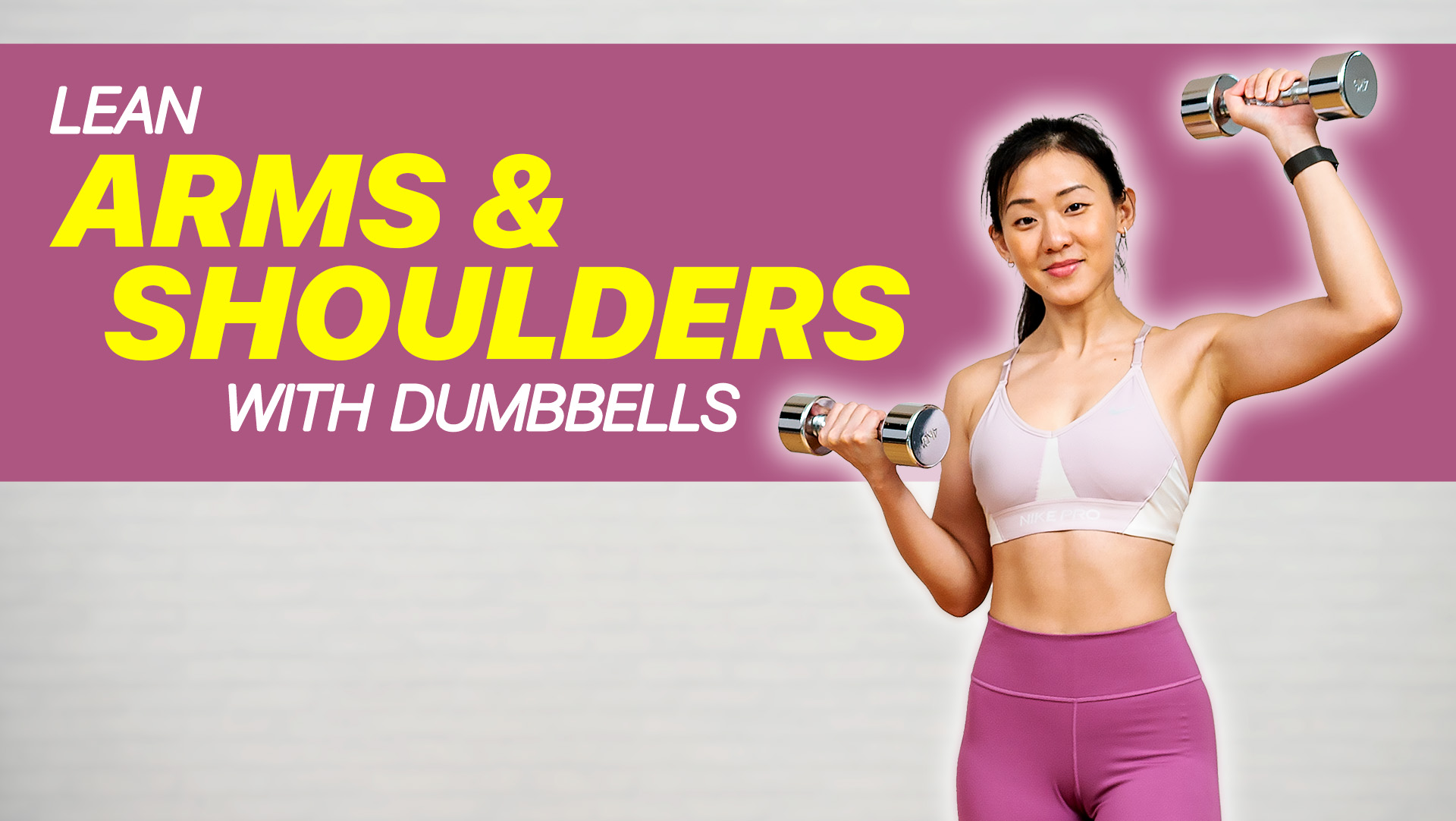With so much of information available out there, I’m sure you’ve come across lots of different fitness advice. Add in the fact that there are so many fitness goals and so many different ways to achieve those goals, it can get really confusing on what works, and what is too good to be true. So let’s talk about the 7 Common Fitness Misconceptions, and separate fact from myth.
Myth #1 - I want to TURN my Fats into Muscles
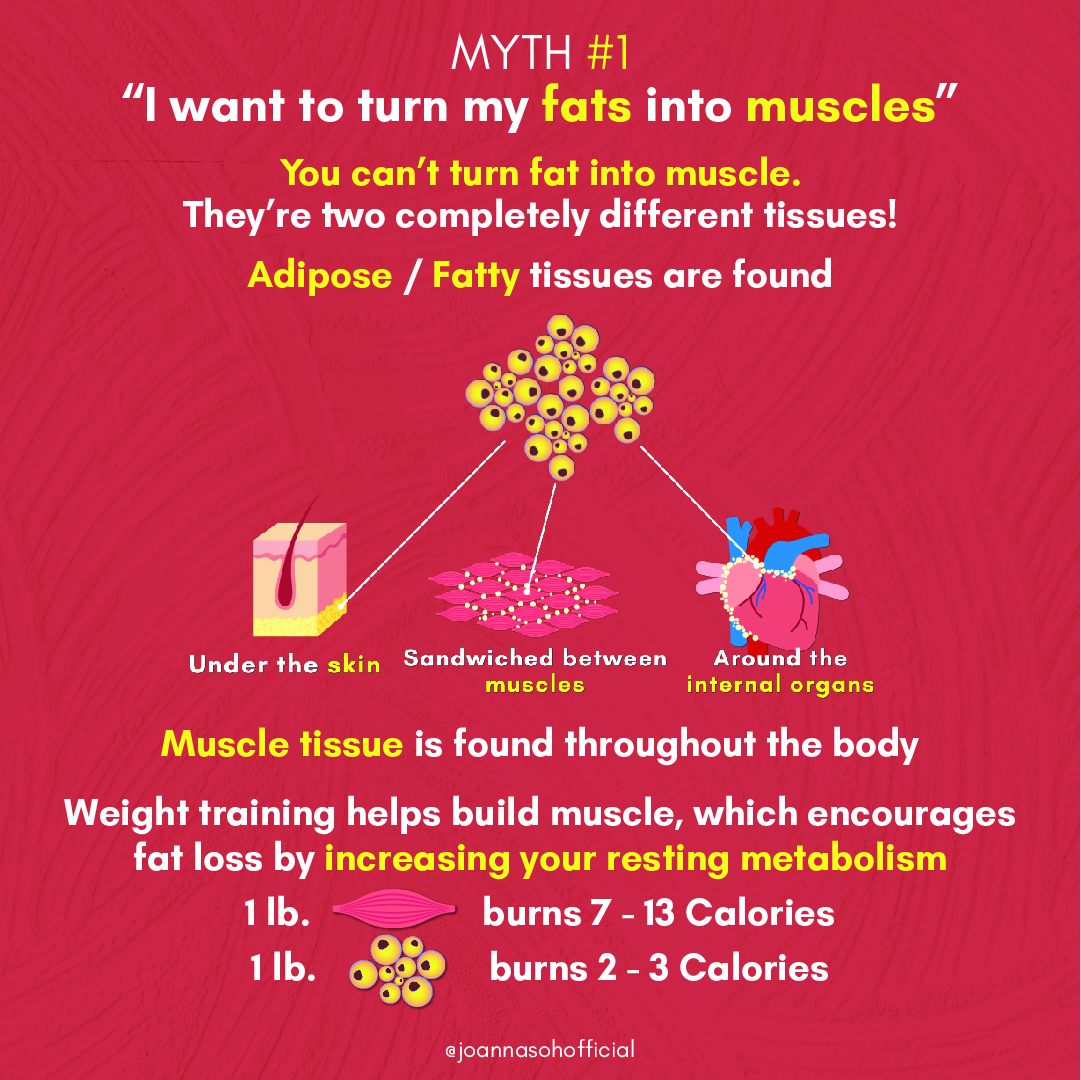
Let’s get the facts right, you can't turn your fats in muscles! They're two different completely different tissues. It’s like saying, I want to turn an apple into a banana. It just doesn’t work that way.
Adipose or fatty tissue is found under the skin, sandwiched between muscles, and around internal organs like the heart. Muscle tissue is found throughout the body.
What weight training does, is that it helps to build muscle, which encourages fat loss by increasing your resting metabolism. 1lb of muscle burns 7 - 13 calories, whereas 1lb fat only burns 2 - 3 calories. So if you have more lean muscles, your body will burn more calories throughout the day, hence looking slimmer and leaner.
Myth #2 - I can eat whatever I want, because I workout
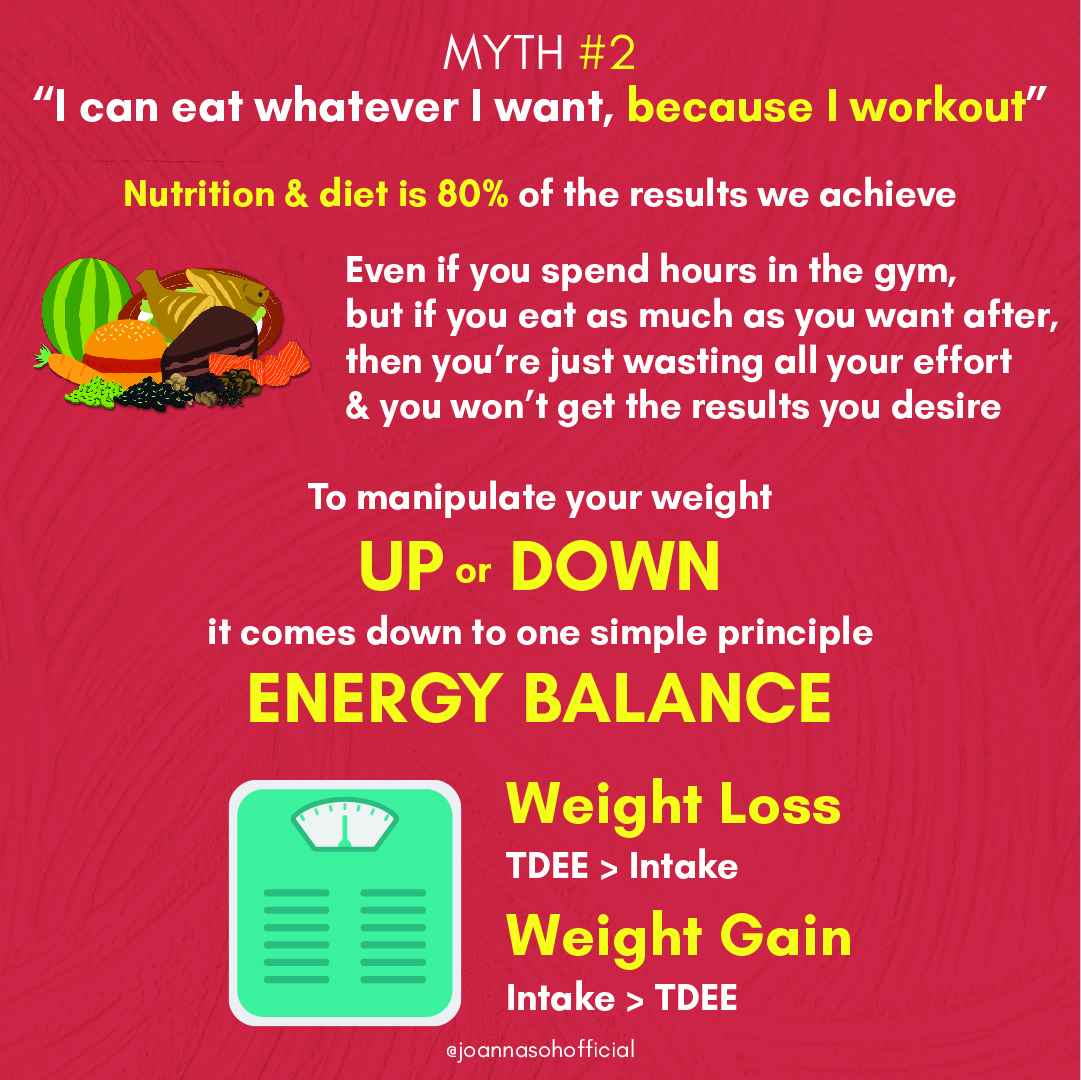
I’ve also come across this question too many times, “Can I workout and not diet? Basically still eat whatever I want?” How I wish this was true because I love my food too. But unfortunately, it’s NOT. I’m sure you’ve heard of this saying, “You are what you eat.”
Nutrition and diet is 80% of the results we achieve. Even if you spend hours sweating and killing yourself in the gym, but if you eat as much as you want after, then you’re just wasting all your effort and you won’t get the results you desire.
Say if you burned 500 calories working out, but you were to consume a huge meal with dessert, wracking up to 1200 calories, then you’re just “undoing” all your effort.
To manipulate your weight, up or down, it comes down to one simple principle of “Energy Balance”. To lose weight, you have to create a NEGATIVE energy balance, that means your Total Daily Energy Expenditure (TDEE) should be more than what you consume. That can be achieved by increasing your activity level and reducing your food portion.
Myth #3 - Can I only do cardio and not lift weights?
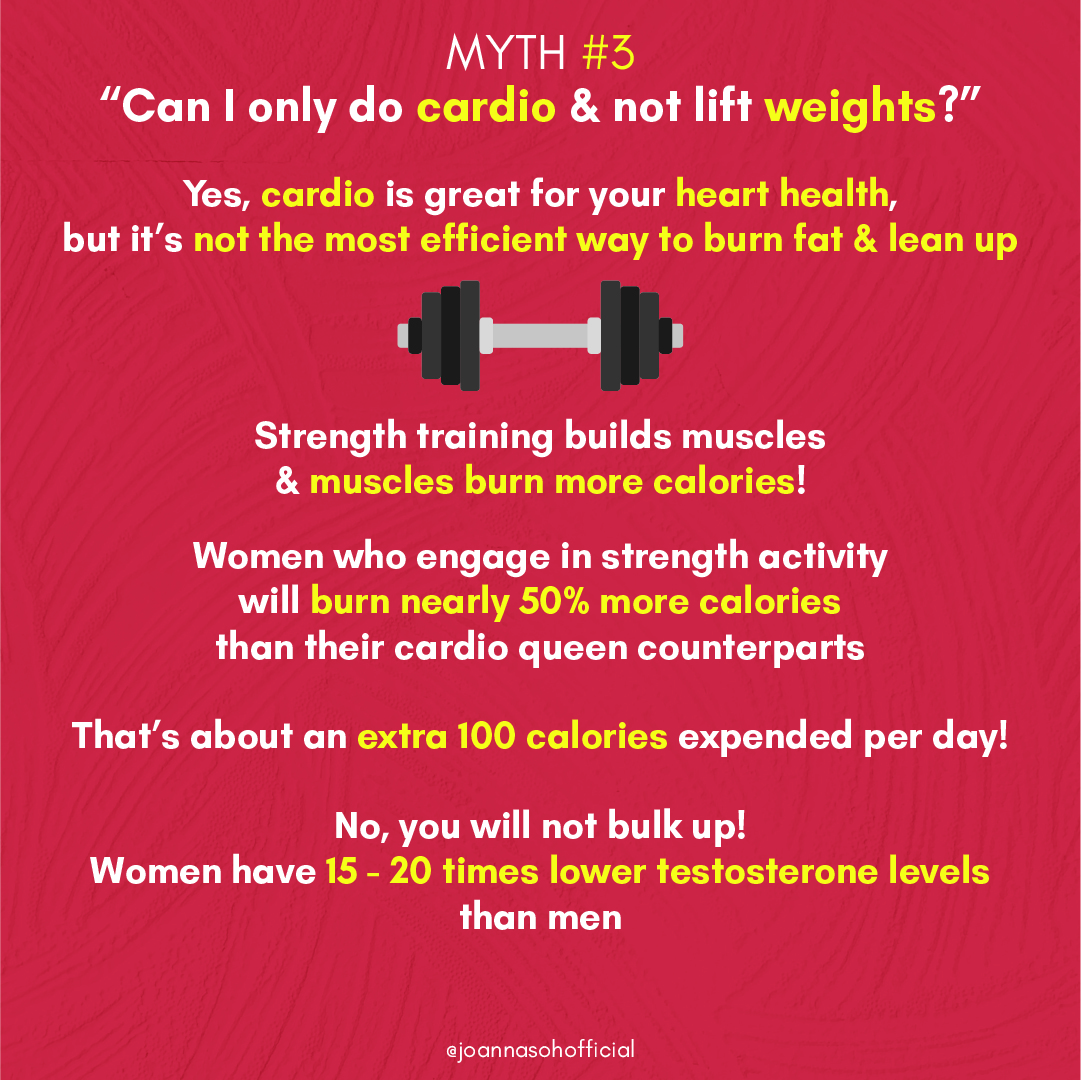
Some people think they need to spend hours of cardio in order to lose the excess pounds but they refuse to lift weights in fear of becoming “bulky”.
Yes, doing cardio is great for your heart health, but it’s NOT the most efficient way to melt off the fat and lean up. I personally rarely perform steady pace cardio, as I am able to maintain my physique through a combination of strength training and HIIT exercises.
As I’ve mentioned in my first point, strength training builds muscles and muscles burns more calories! Studies have also shown that women who regularly engage in strength training activity will burn nearly 50% more calories than their cardio queen counterparts. That translates to about an extra 100 calories expended per day - even when the body is at rest!
And no ladies, you will NOT bulk up! We have 15 to 20 times lower testosterone levels than men, therefore become "bulky" just by adding weights to to our fitness routine is highly unlikely. Instead, adding weight training will make us stronger and shape our body.
On the other hand, HIIT workout is a great way to burn more calories in a short period of time. You will also benefit from the “afterburn” - the calories you keep burning even after you’re done with your workout. It also helps to improve performance such as explosive strength, agility and endurance.
Say that however, HIIT workouts aren’t for everybody. It’s not suitable for beginners or those who have history of injuries and can even lead to overtraining. Hence, I’d only recommend to perform HIIT workout 2 times weekly.
Myth #4 - I will gain fat once I stop lifting weights
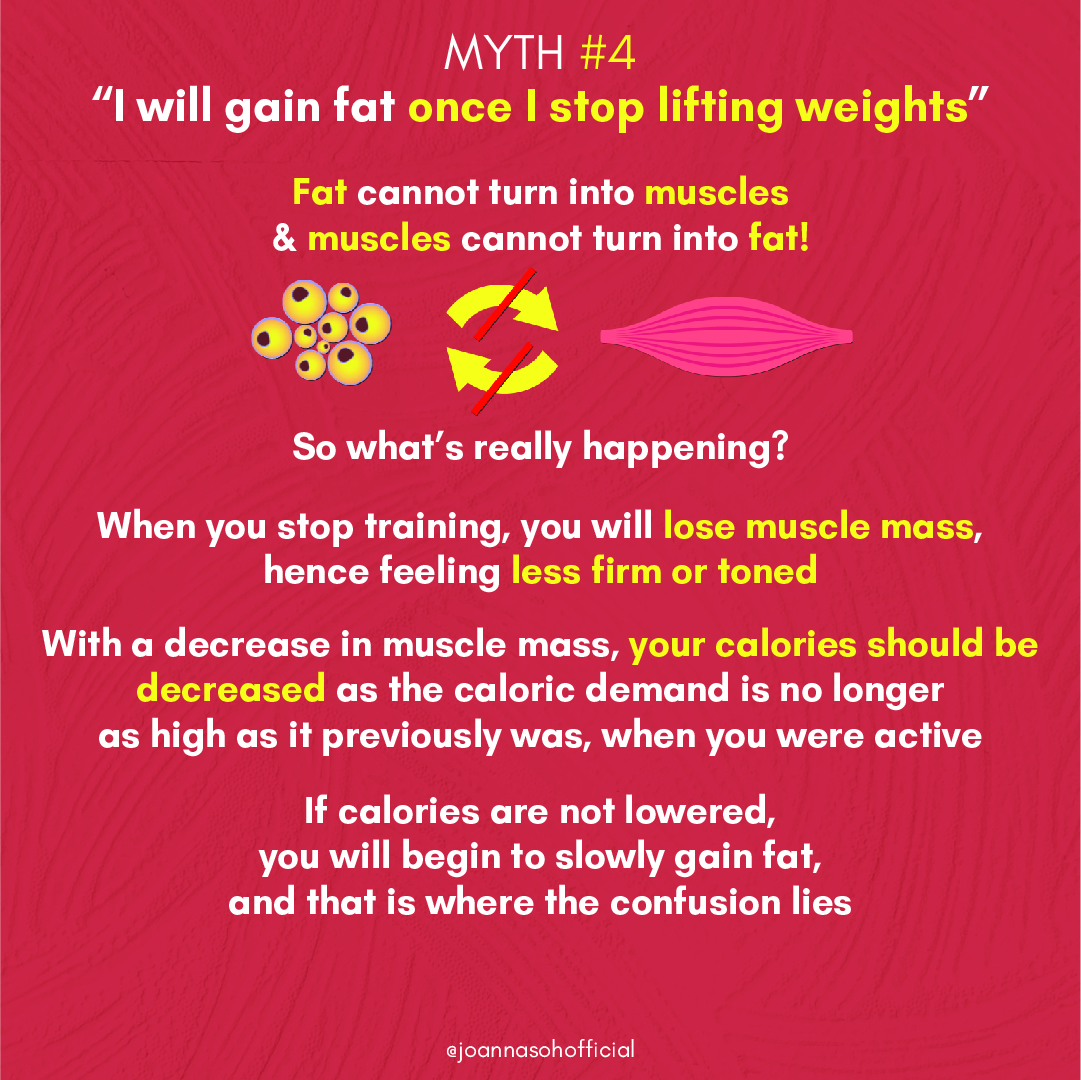
Once again, this goes back to the first point. Fat cannot turn into muscles and muscles cannot turn into fat! They are 2 completely different tissues. I think this myth came about because we tend to see our super fit sporting heroes becoming fat and out of shape once they stop training.
So what’s really happening? When you stop training, you will lose muscle mass, hence feeling less firm or toned. If you continue to remain inactive but continue to consume the same amount of calories as previously, then your body will start to put on fat, because you are consuming more than what your body is burning.
With a decrease in muscle mass, your calories should also be decreased as the caloric demand is no longer as high as it previously was, when you were active. If calories are not lowered, you will begin to slowly gain fat, and that is where the confusion lies.
Myth #5 - I want to only reduce my hips or belly fat!
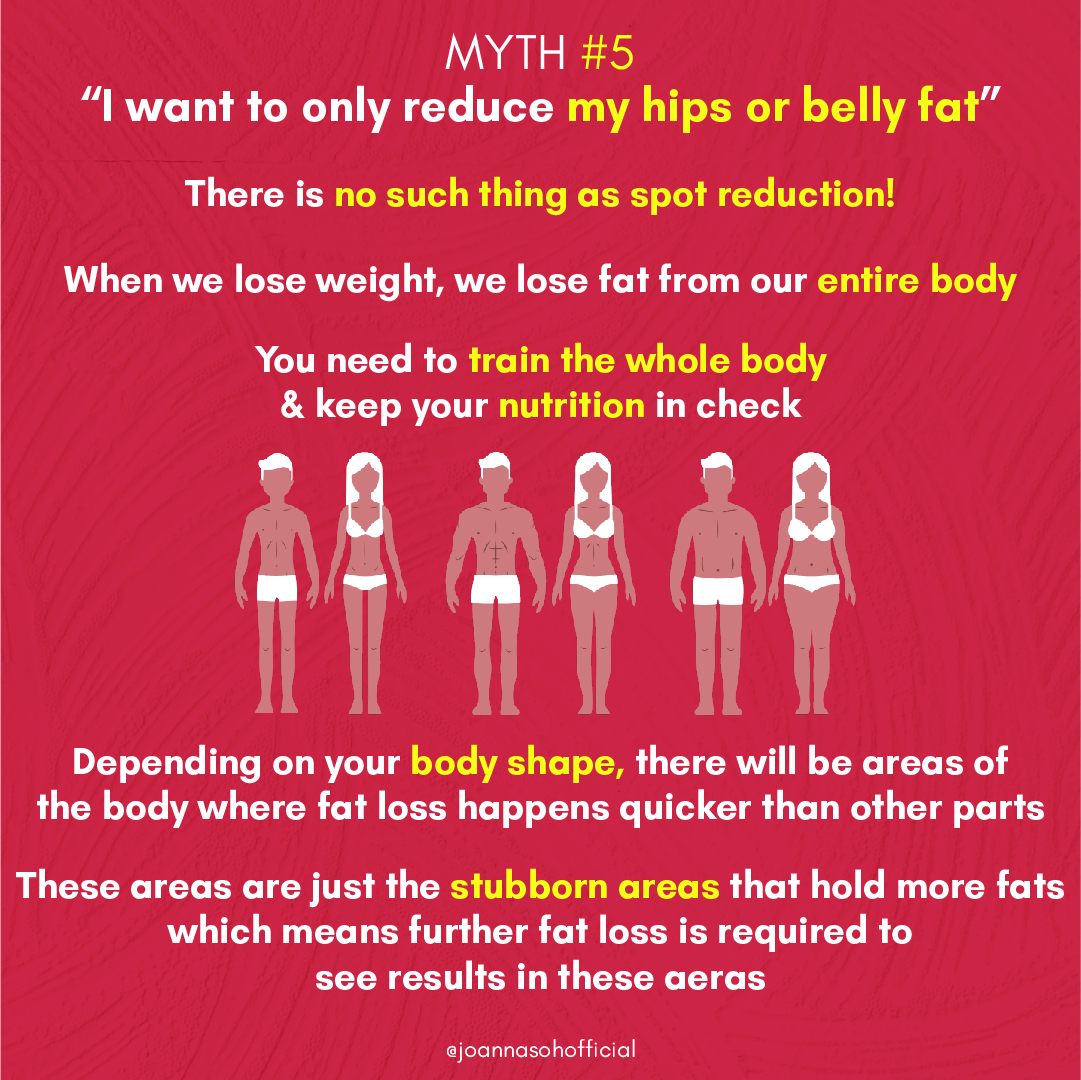
There is no such thing as spot reduction! You’ve probably heard me saying this over and over again, yet I kept receiving comments stating that “I only want to lose my hips or belly fat”. Even worse, there are workouts out there claiming that you can get a flat belly in 2 weeks or even a collar bone workout. Like for real?
Toning one area won’t just burn fat from that area and reveal slimmer, sexier abs. When we lose weight, we lose fat from our ENTIRE body. You need to train the whole body and keep your nutrition in check. Covering the abdominals is a layer of fat. Healthy eating is the key to minimizing fat stores around the midsection.
Depending on your body shape, there will be areas of our bodies where fat loss happens quicker compared to other parts. These areas are just the stubborn areas that hold more fat which means further fat loss is required to see the results in these areas.
Of course, by adding strength training, you can add more muscle definition to your body, but those definition will only be visible if you have a lower body fat percentage.
Myth #6 - Eating CARBS will make me fat!
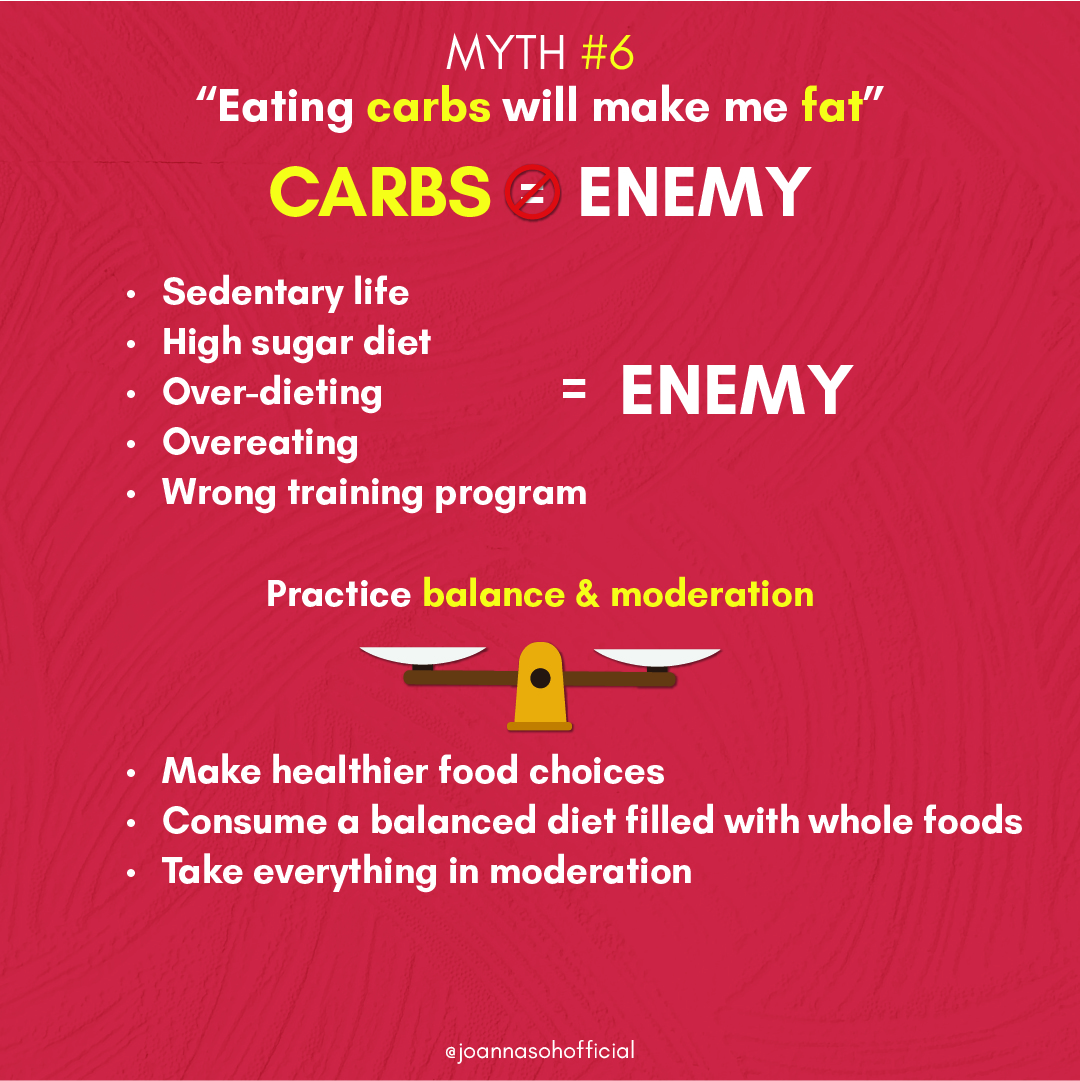
Remember the principle of weight loss, it’s about “Energy Balance”. Whether your goal is to increase performance or to pack on muscle, you need good carbs and plenty of them. I love my carbs and it has helped me to reduce my body fat and lean up.
Carbs aren’t the enemy; a sedentary life, high sugar diets, over-dieting, overeating, or having the wrong training program are. If you follow a restricted diet and were to eat your normal diet again, the weight come back on. I’ve always been a believer of balance and moderation. Make healthier food choices, consume a balanced diet filled with whole foods and take everything in moderation.
Myth #7 - Longer workout produces better results
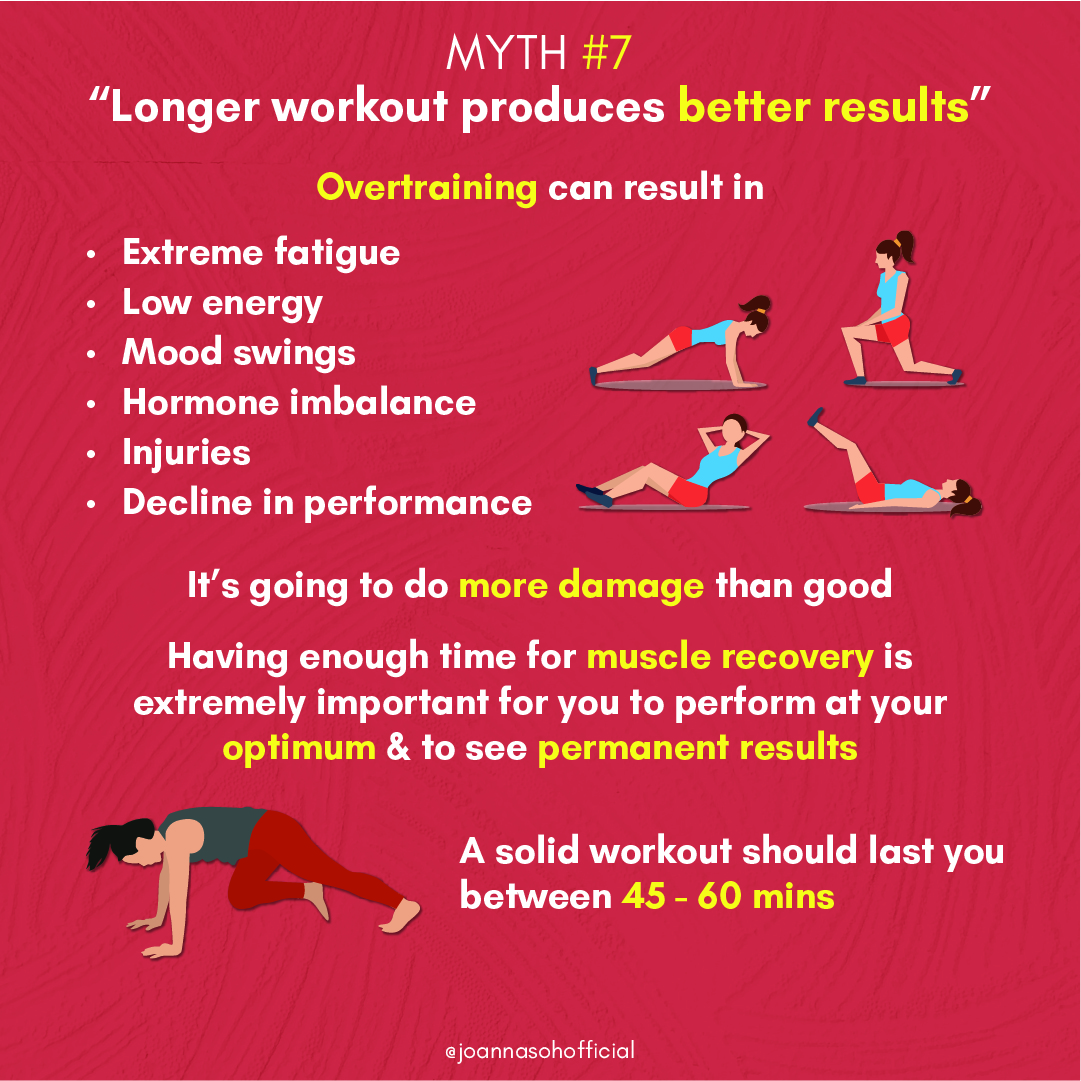
I guess it’s common for us to have the “the more, the better” mindset. In fact, I’ve known of trainers who trained their clients 6 - 8 hours a day in order to produce fast weight loss results, for a fitness competition.
Yes, they did lose a lot of weight within the time frame of the competition. However, what you have to ask yourself is, is this lifestyle sustainable? What will it do to their long term mental and physical health? The people I know have gain more weight after the show and it has impacted their self esteem. The truth is, they can’t keep up with their workout and sustain for life.
Overtraining can also result in extreme fatigue, low energy, mood swings, hormone imbalance, injuries and decline in performance. It’s gonna do more damage than good. Having enough time for your muscles to recover is extremely important for you to perform at your optimum and to see permanent results.
A solid workout should last you between 45 - 60 minutes. If you find yourself spending longer than that, then you should really review your training. Are you spending more time training or taking long breaks on your phone or catching up with your workout buddy?
In Essence
This list could go on and I’m sure you might have come across other several fitness misconceptions. Or perhaps you might have a questions which you’re unsure of. Let me know in the comments below. The bottom line is that, there isn’t one method fits all. The more you learn about your own body through nutrition and training, and the more you educate yourself in all areas of fitness, the better you will be in creating and implementing these information and techniques that will help you achieve your fitness goals.
_


